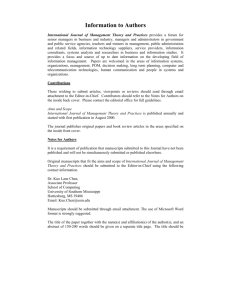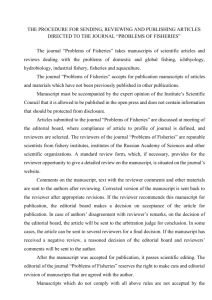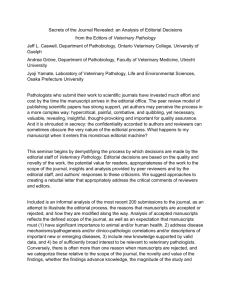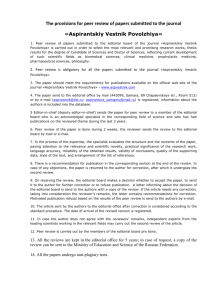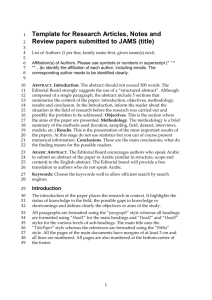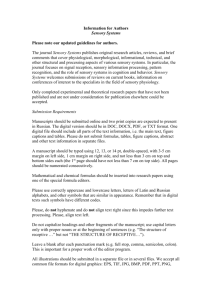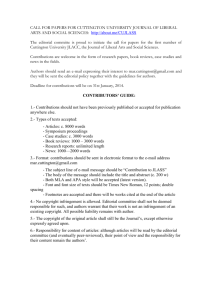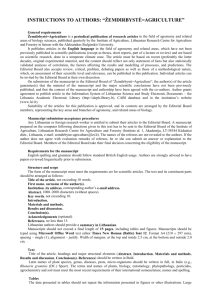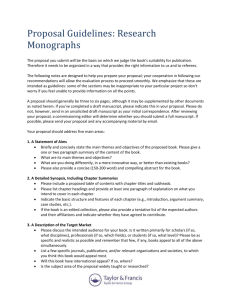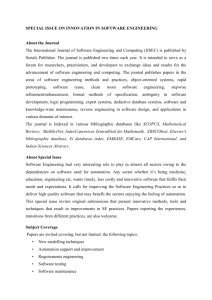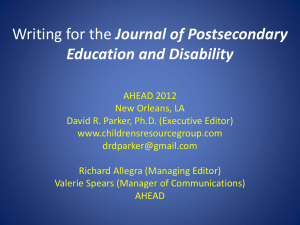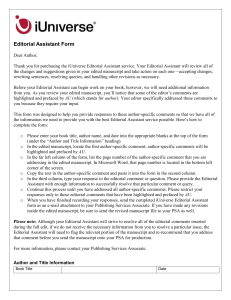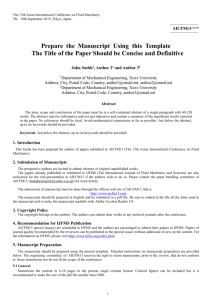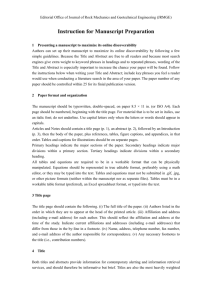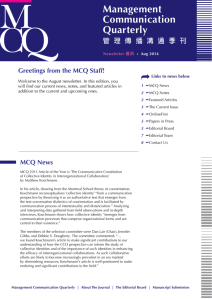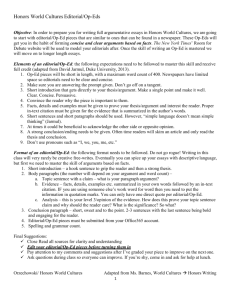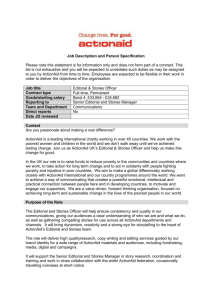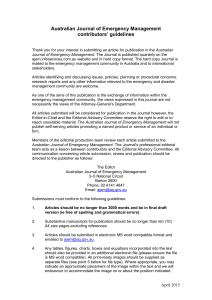RULES FOR AUTHORS 1. Scientific articles, reports and other
advertisement
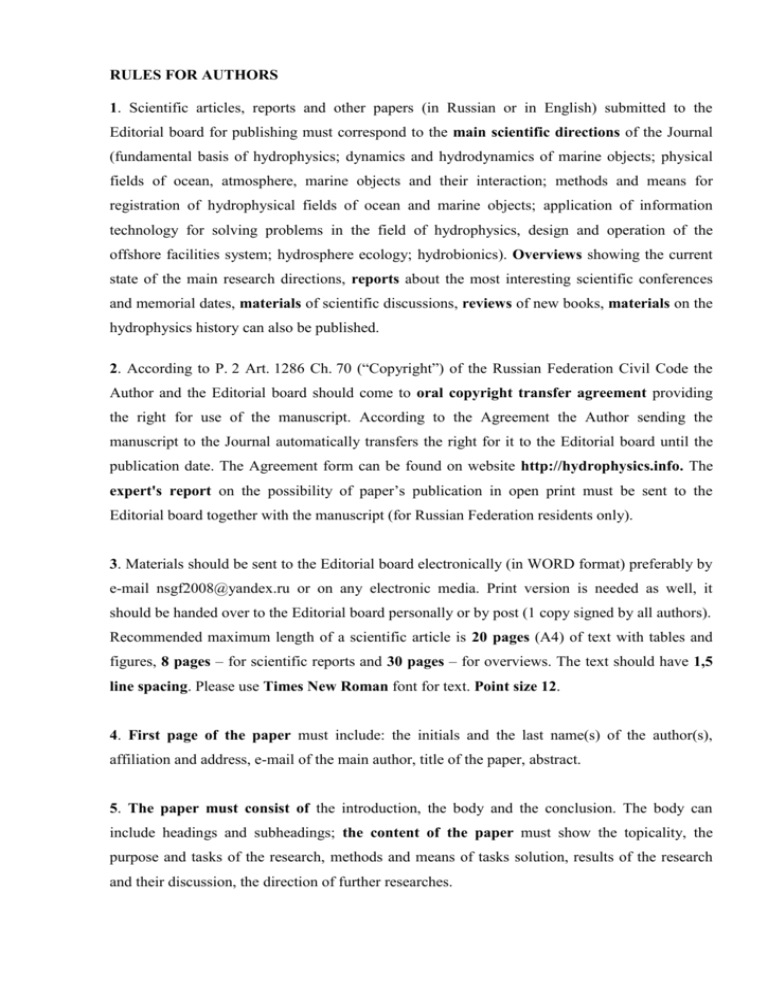
RULES FOR AUTHORS 1. Scientific articles, reports and other papers (in Russian or in English) submitted to the Editorial board for publishing must correspond to the main scientific directions of the Journal (fundamental basis of hydrophysics; dynamics and hydrodynamics of marine objects; physical fields of ocean, atmosphere, marine objects and their interaction; methods and means for registration of hydrophysical fields of ocean and marine objects; application of information technology for solving problems in the field of hydrophysics, design and operation of the offshore facilities system; hydrosphere ecology; hydrobionics). Overviews showing the current state of the main research directions, reports about the most interesting scientific conferences and memorial dates, materials of scientific discussions, reviews of new books, materials on the hydrophysics history can also be published. 2. According to P. 2 Art. 1286 Ch. 70 (“Copyright”) of the Russian Federation Civil Code the Author and the Editorial board should come to oral copyright transfer agreement providing the right for use of the manuscript. According to the Agreement the Author sending the manuscript to the Journal automatically transfers the right for it to the Editorial board until the publication date. The Agreement form can be found on website http://hydrophysics.info. The expert's report on the possibility of paper’s publication in open print must be sent to the Editorial board together with the manuscript (for Russian Federation residents only). 3. Materials should be sent to the Editorial board electronically (in WORD format) preferably by e-mail nsgf2008@yandex.ru or on any electronic media. Print version is needed as well, it should be handed over to the Editorial board personally or by post (1 copy signed by all authors). Recommended maximum length of a scientific article is 20 pages (A4) of text with tables and figures, 8 pages – for scientific reports and 30 pages – for overviews. The text should have 1,5 line spacing. Please use Times New Roman font for text. Point size 12. 4. First page of the paper must include: the initials and the last name(s) of the author(s), affiliation and address, e-mail of the main author, title of the paper, abstract. 5. The paper must consist of the introduction, the body and the conclusion. The body can include headings and subheadings; the content of the paper must show the topicality, the purpose and tasks of the research, methods and means of tasks solution, results of the research and their discussion, the direction of further researches. 6. Abstract must repeat structure and contents of the paper in brief. The subject and purpose of the research can be specified in abstract only if they aren't clear from the title. Abstract must include the main new theoretical and experimental results of the research, their scientific and applied value as well. Conclusions can be followed by recommendations, assessments and offers discussed in the paper. Abstract text must be coherent. Abstract shouldn't contain references. It is better not to use parentheses, abbreviations, symbols and legends in addition to common. Abstract volume must be 150—250 words. 7. Equations in text file should be typeset using equation editors (Equation or MathType). Greek and Russian symbols, numerical symbols, mathematical operations and functions should be typeset in normal type, Latin symbols – italic type, vectors – bold-face type. Sequential numbering of equations is recommended. The equation number should be placed on the right edge of the sheet in parentheses. It is better to number only those equations that are referenced. 8. Tables and figures must be placed in the text as they are mentioned. Image files (*.tif, *.jpg or *.pcx) and captions should be submitted additionally. Designation of the axes must be not less than 10 point size. Black-and-white figures must be clear and contrast, color printing is possible when it is reasonably necessary. 9. The list of references should be provided in order of appearance in a uniform format prescribed by the system of the Russian index of scientific citation. In text references are given in square brackets, e. g. [1]. References to unpublished works are not permitted. When specifying the Internet link the last access date must be indicated. SAMPLES Pedlosky J. Geophysical Fluid Dynamics, 2nd edition. Springer-Verlag Publishers, 1987. 710 p. Gelenbe E., Mitrani I. Analyzing and synthesis of computer systems. London, Academic Press, 1980. 280 p. Smagorinsky J. General circulation experiments with the primitive equations: I. The basic experiment. Mon. Weather Rev. 1963, 91, 3, 99–164. Padman L., Erofeeva S. A barotropic inverse tidal model for the Arctic Ocean. Geophys. Res. Let. 2004, 31, 2. doi: 1029/ 2003. GL019003. Ray A. A new methodology. Proc. 20th IEEE Conf. On Decision and Control. San Diego, 1981. P. 1363–1369. Fundamentalnaya i prikladnaya gidrofizika. URL: http://hydrophysics.info/?lang=en (date of access 03.10.14) 10. The paper can be approved for publication only after correction by the author in accordance with the reviewers’ remarks. The corrected manuscript must be signed by all authors and sent to the editorial office by post or submitted personally. 11. Additional information must be attached to the submitted manuscript: data about the authors (name, last name, date of birth, affiliation, position, scientific degree, academic status, contact phone number, e-mail); title of the paper, abstract, key words (up to 7 words) and list of references. 12. We do not accept the manuscripts which do not correspond to the Rules of the Journal. We do not send the manuscripts back.
